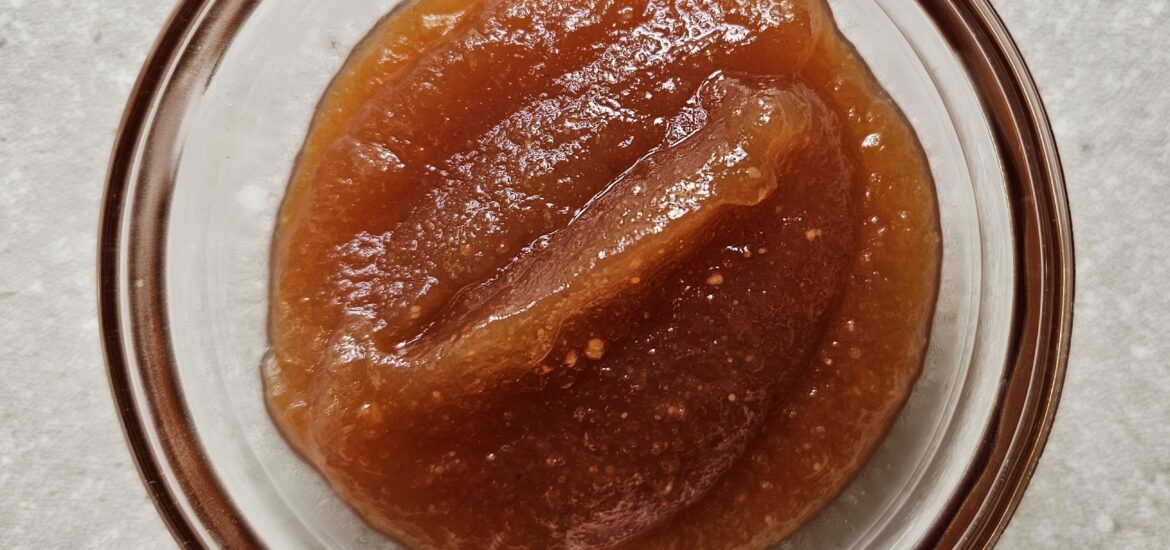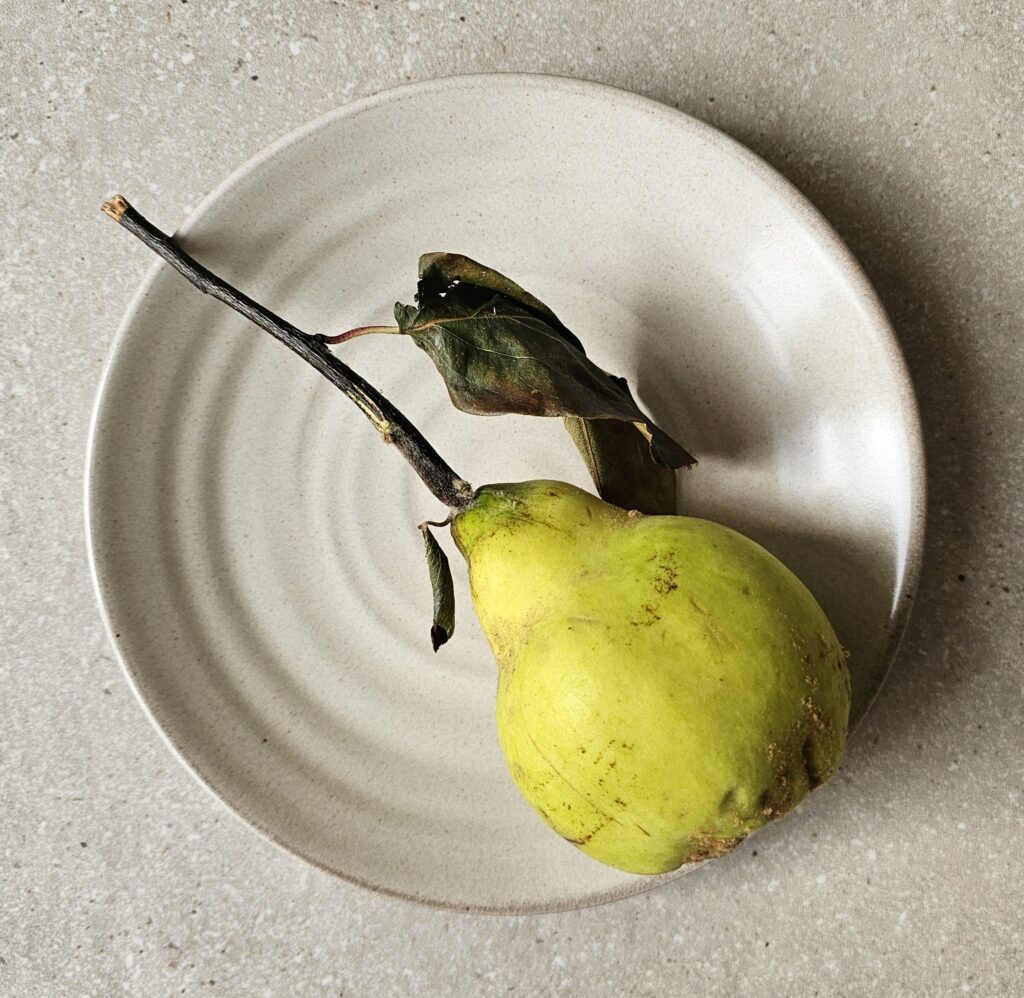
Quince is a difficult fruit and a difficult word. Spellcheck wants to correct quince to quiet and in my head I keep thinking of the TV series Quincy, M.E. which I loved as a child. So much so that when once asked in a spoken English-language examination ‘what would you like to be when you grow up?’, I said I would like to be a forensic pathologist.
Ridiculous answer but maybe I was a ridiculous child.
Quince was also problematic at school when studying The Owl and the Pussycat by Edward Lear. I distinctly remember a classmate asking the teacher what is quince? Followed by what is a runcible spoon? In the days before smartphones and the internet (it was 1980), the teacher had no answer. It was a happy ending though, as the owl and the pussy cat ‘…danced by the light of the moon, the moon, the moon, they danced by the light of the moon’.
What then, to do with quince?
Membrillo is a Spanish quince paste which makes for a sweet and tangy foil to rich and salty cheeses. Of all the accompaniments to cheese (chutneys and preserves) membrillo is my favourite. It is easy enough to purchase from specialist cheese shops so it has never occurred to me to make my own.
However, faced with a box of quince which a neighbour’s friend passed to me, since they know I love cooking, I had to research how to make it.
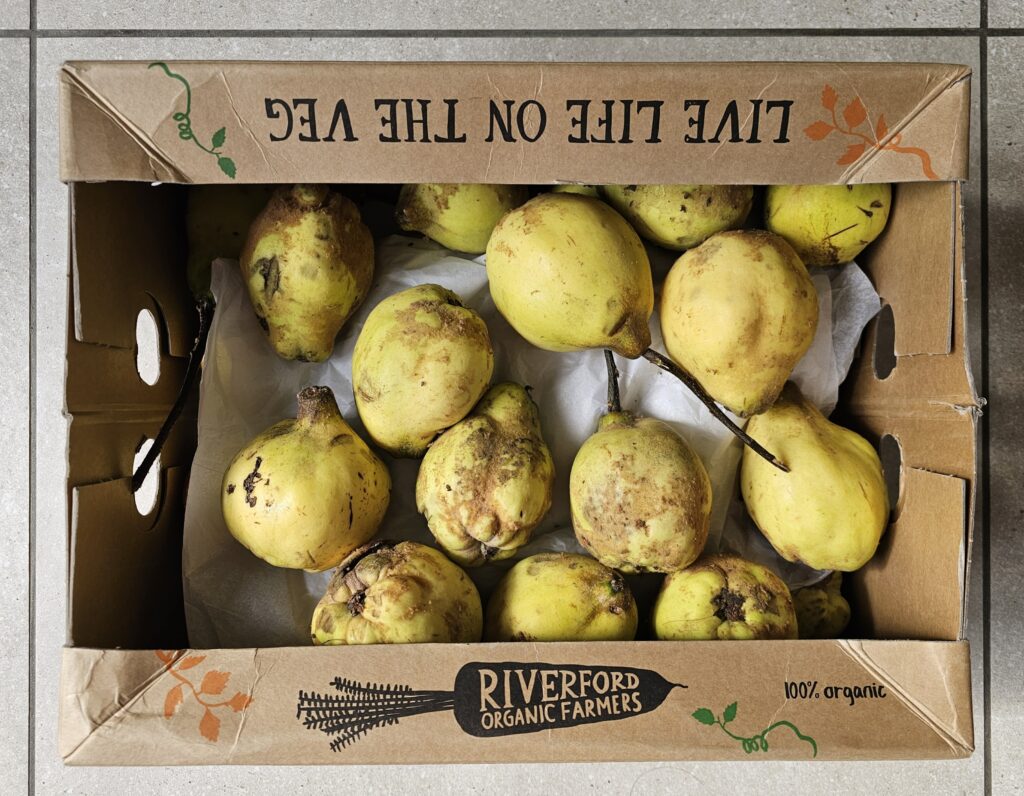
First I turned to A Year at Otter Farm (by Mark Diacono, published by Bloomsbury, ISBN 978-1408828618) which describes the fruit as hard and sour. It cautions to take care when peeling, chopping or coring quince as it is akin to doing the same with a cricket ball.
I found three membrillo recipes, the first not surprisingly from the Moro Cookbook (by Sam and Sam Clark, published by Ebury Press, ISBN 978-0091874834) and the second from Riverford. Both put me off with the mention of burning my arm. The third recipe, from the Otter Farm cookbook, did not mince its words: don’t let the heat get top high unless you are wearing chain mail.
Recipe from the Moro cookbook
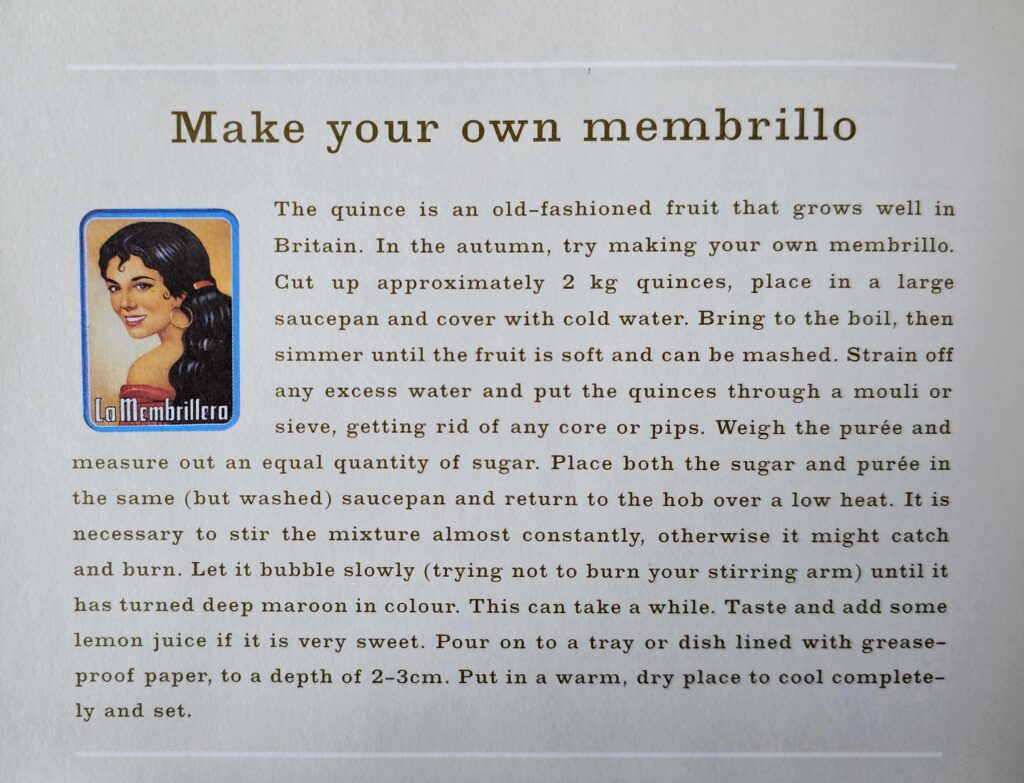
I knew that the only way I would want to make membrillo would be in a Thermomix. A quick internet search returned one recipe, in Spanish. With the help of Google Translate I got the gist of the very basic instructions, filling in the rest of the details from other sources.
After making an initial three batches of membrillo here is my version. I am not sure if it will pass the gourmet cheese shop test (i.e. will they sell my product) but I think the results are superb, there was no mess in the kitchen and crucially I did not burn my arm.
Quince 101:
1. it is a very hard fruit
2. sharpen your knife before preparing it
3. it tastes sour but is fragrant
4. its peel is covered by a ‘down’ which you should wash and rub off before using
5. besides making membrillo you can poach quince in e.g. marsala or port, adding some warming whole spices
6. quince turns brown as soon as cut, so either use straight away or put them in a bowl with lemon juice
7. quince turns red as it cooks.
quince turns brown as soon as it is cut
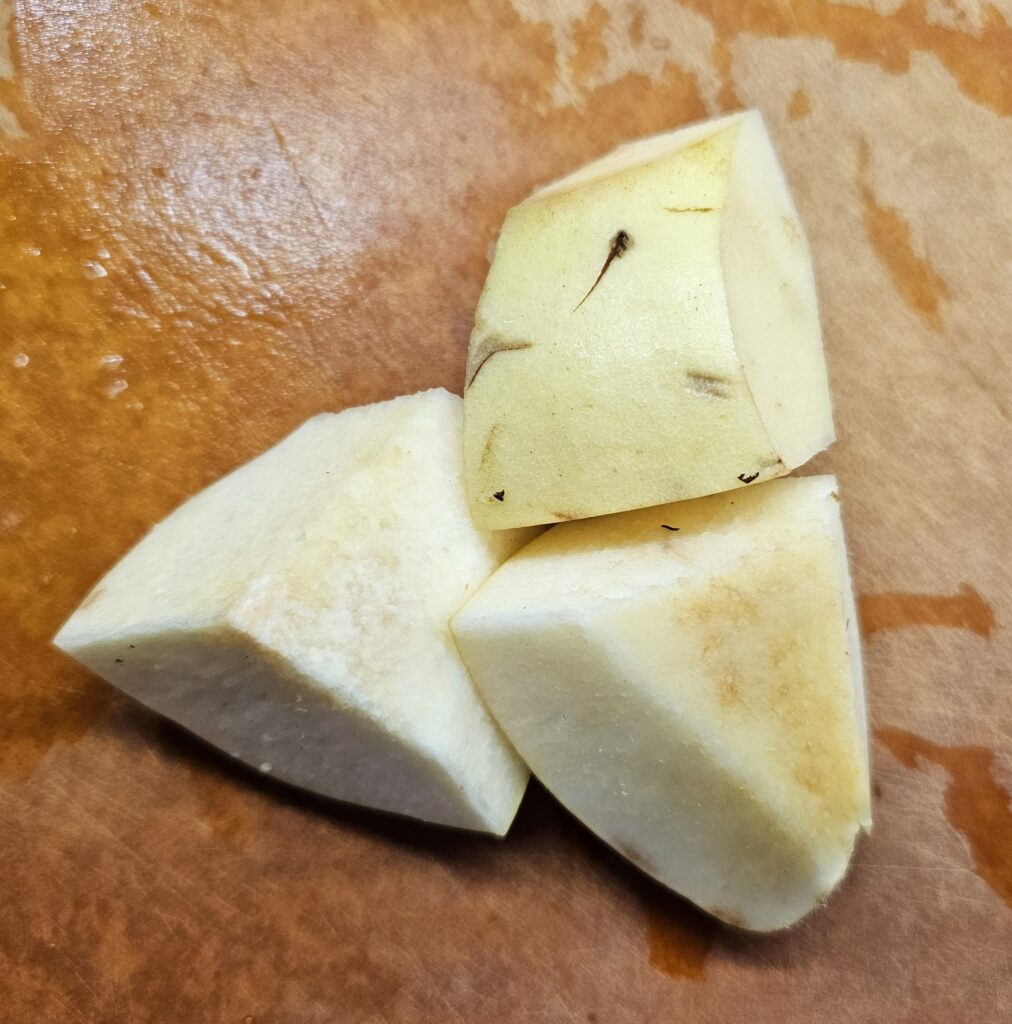
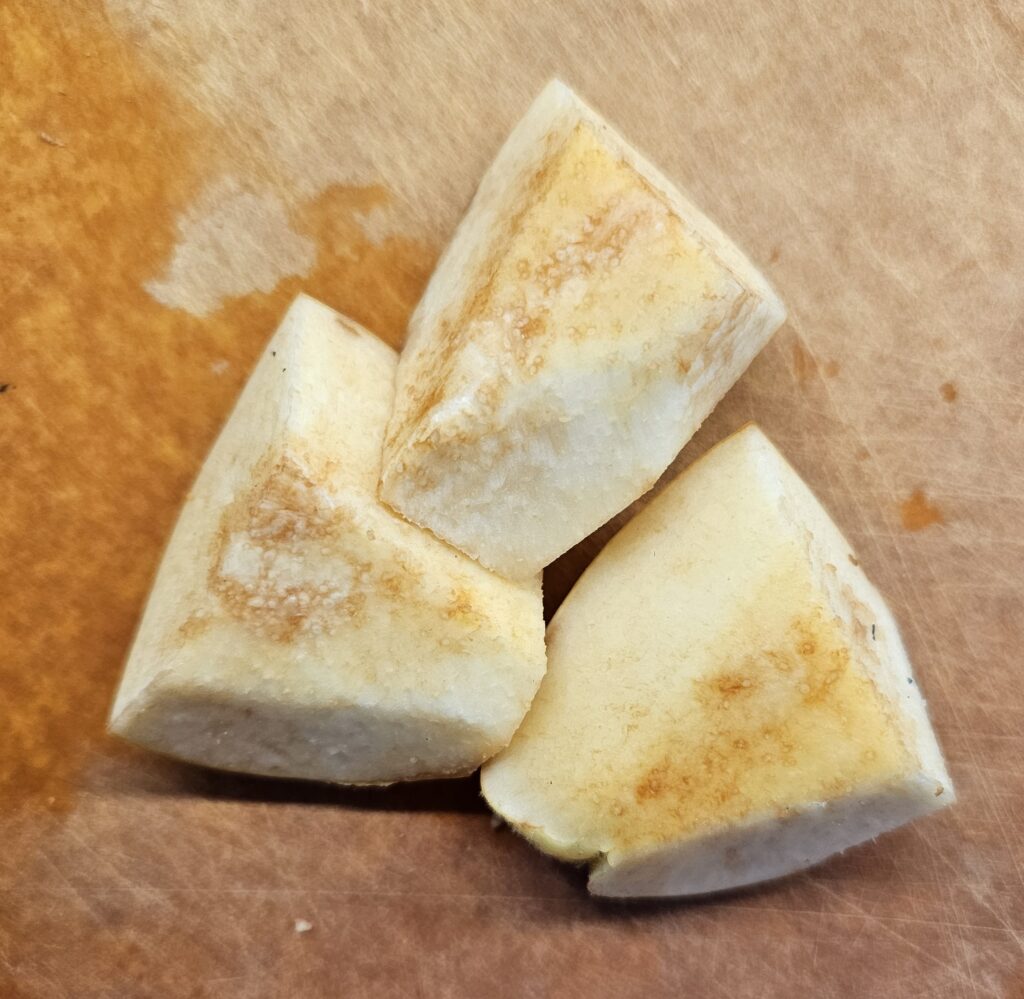
quince turns red as it cooks (below) uncooked, after 30 minutes and after 60 minutes of cooking
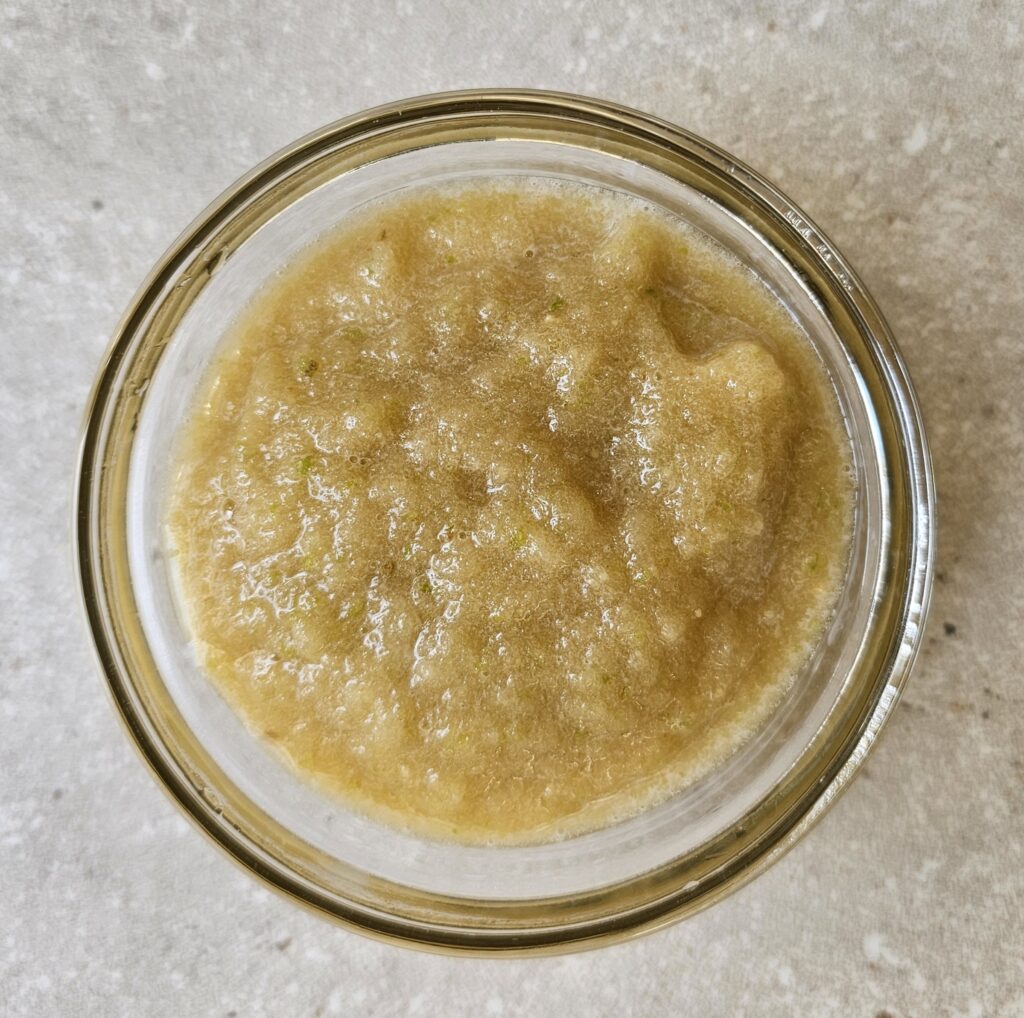
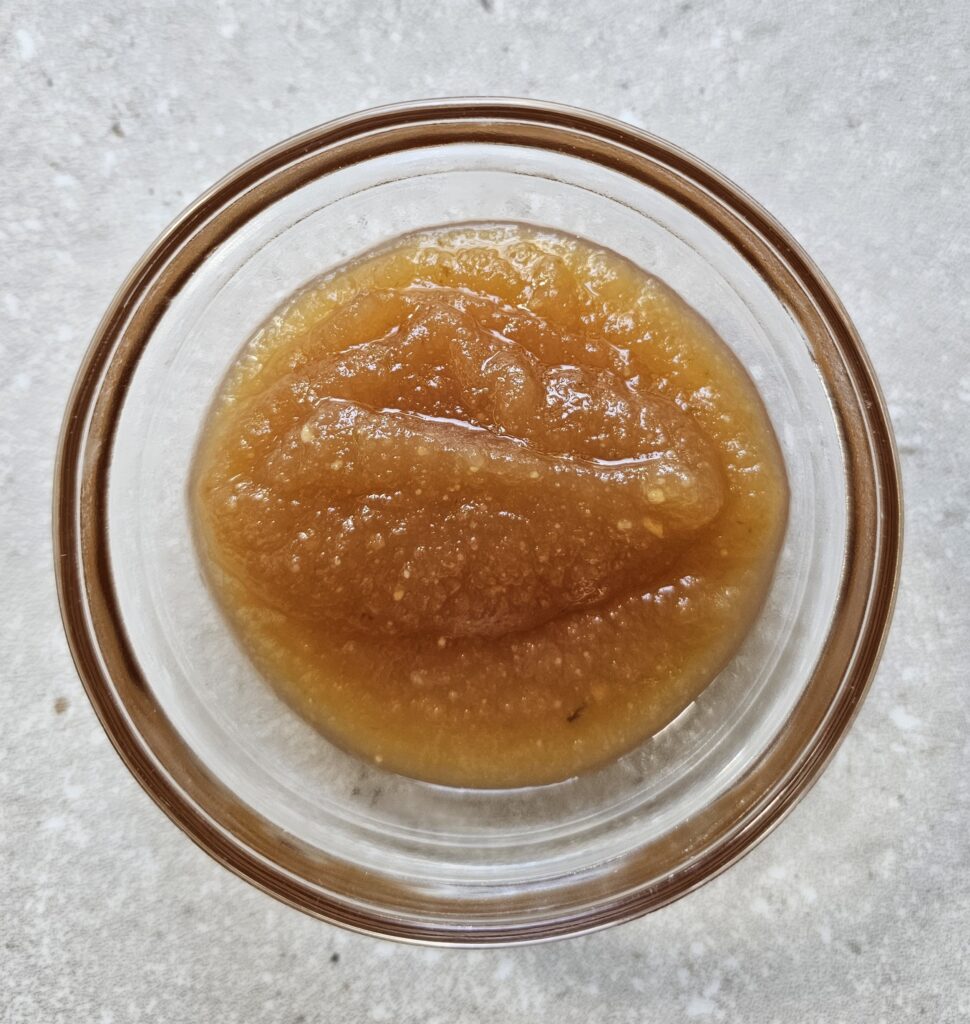
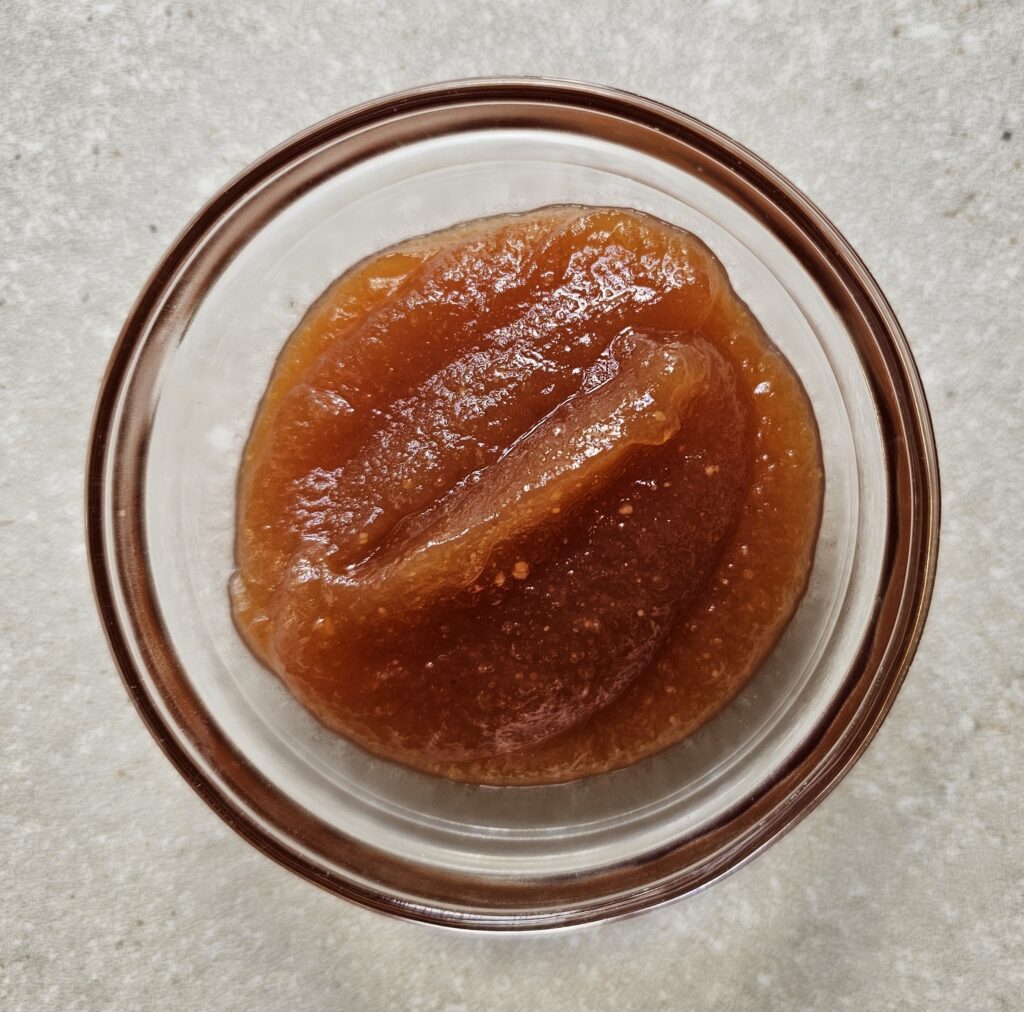
Thermomix Membrillo:
850 g prepared membrillo (you may need up to 1.2 kg fruit to get this prepared amount)
750 g unrefined granulated sugar
How to Make:
Carefully wash the quince and rub off any furry down that covers the skin.
Quarter and core the quince, removing any bruised bits. There is no need to peel the quince as the pectin from the skin helps the membrillo to set.
Further cut the quince into smaller pieces i.e. each quarter into 2 or 3 pieces.
[The quince and sugar have to be processed in two batches]
Place 425 g quince + 375 g sugar in the TM bowl.
Place the TM lid on, puree 30 seconds/ starting at speed 5 then increasing to speed 10.
Remove this puree from the TM bowl and set aside.
Process the second batch of 425 g quince + 375 g sugar: puree 30 seconds/ starting at speed 5 then increasing to speed 10.
Scrape down the sides of the TM bowl, and add back the first batch of processed quince.
Replace the TM lid and place the TM basket on top of the lid (no cap).
Cook 30 minutes/ 100 C/ speed 3.5.
At points in the cooking the machine might shake a bit but ignore this as things will settle down.
After the first 30 minutes of cooking, remove the lid, scrape down the sides of the bowl, give everything a stir.
Replace the TM lid and place the TM basket on top of the lid (no cap).
Cook a further 30 minutes/ 100 C/ speed 3.5.
When cooked, this amount of membrillo will fill 2 x 750 ml plastic takeaway tupperwares or 3 x 500 ml tupperwares. You can also line a small baking tray with baking parchment and pour the entire contents on to it for cooling.
After the membrillo has set at room temperature, cover the top with a piece of baking parchment, cover with a lid, label with the date and store in the fridge.
You can also cut the set membrillo into smaller pieces, wrap up in baking parchment tied up with string. This will make a lovely present for a foodie friend. To win top marks it is good also to give this along with some Spanish manchengo cheese or another similar cheese that your local cheesemonger can recommend.
My first tupperware of membrillo
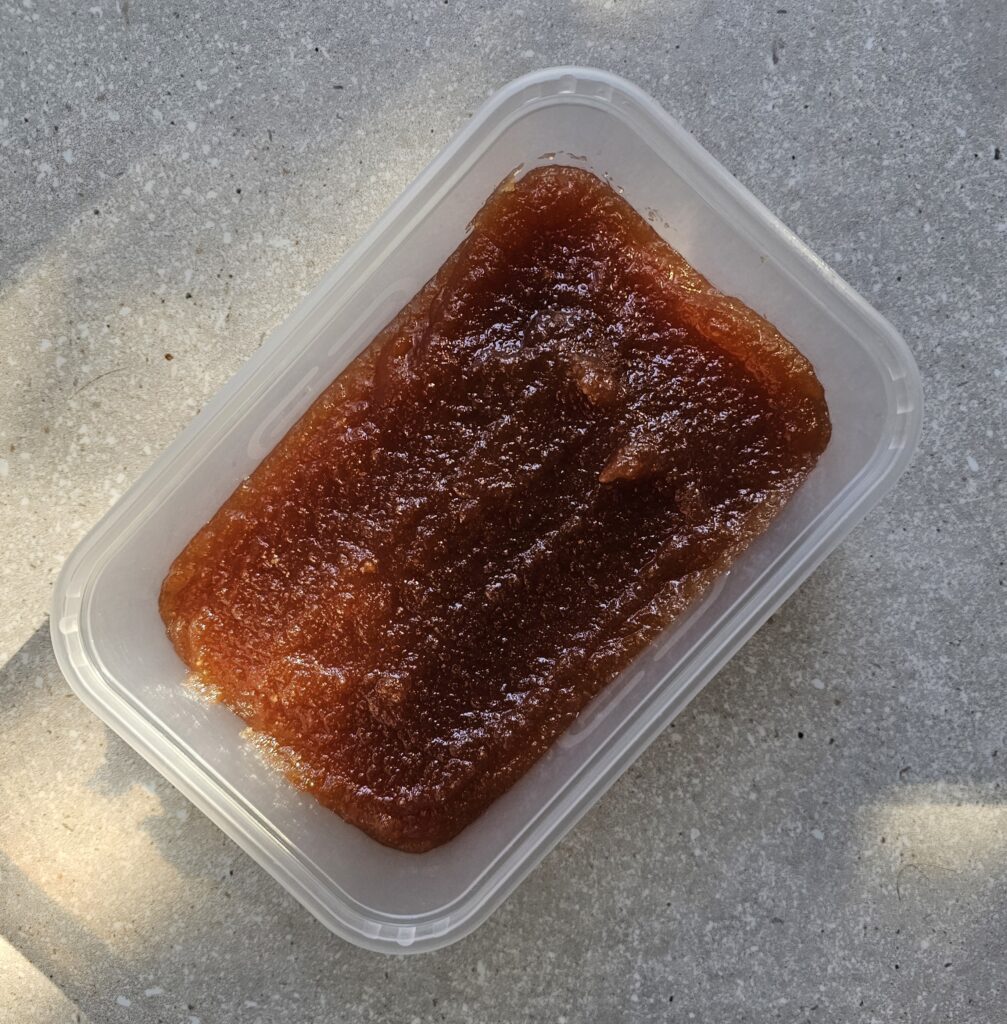
My second batch of membrillo which I decided to put in a larger tray, to be cut into smaller pieces
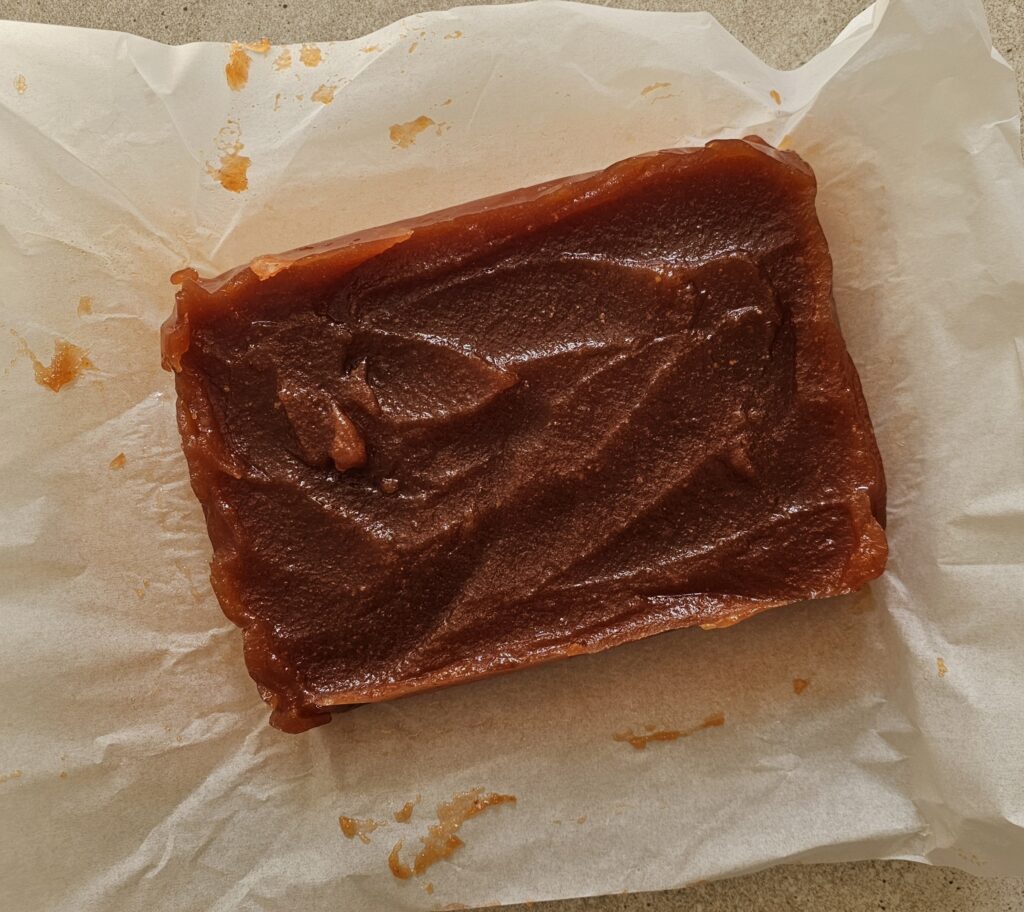
My third batch of membrillo, stored in deeper tupperwares
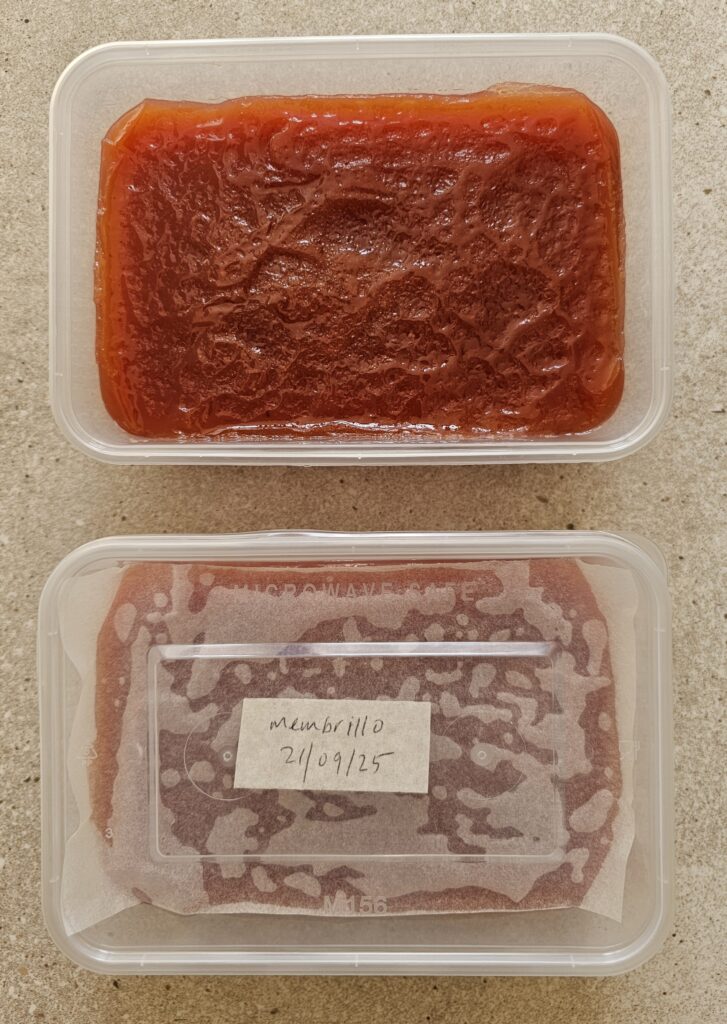
There are a further two batches of membrillo waiting to be made. This was a fun project, made less time-consuming with the help of the Thermomix. I am now going to make a list of friends I am giving the membrillo to.
After the next post (or not – depends on whether the cake I make turns out) I am pausing for a break, as there are a few family and community events that need my presence and attention. I will resume writing sometime in October.
